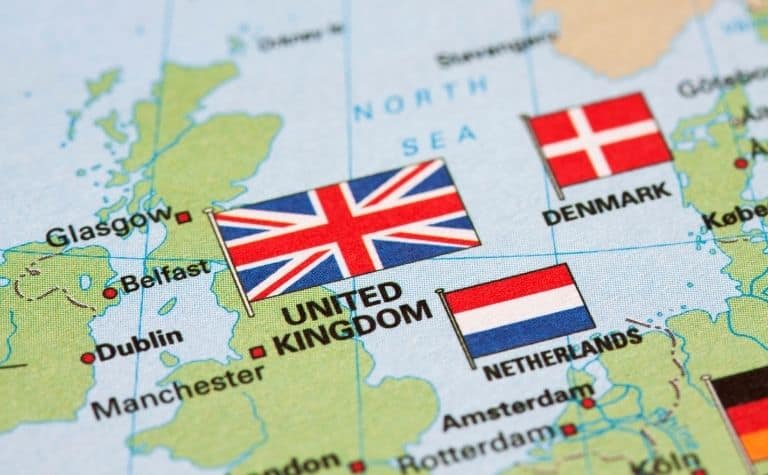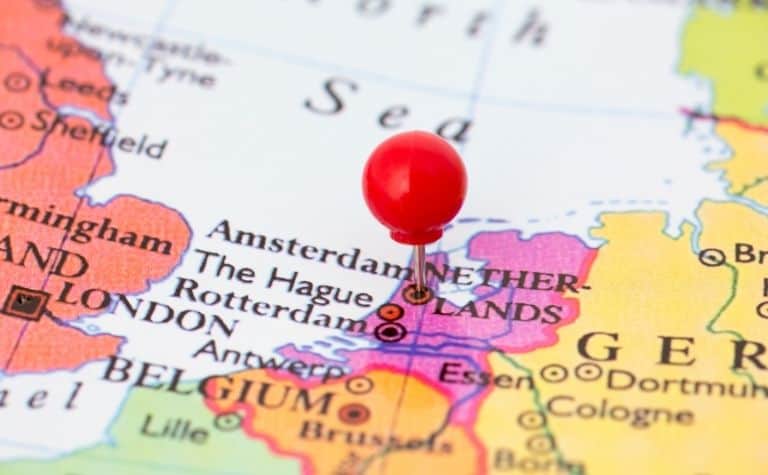One nation’s people rose to prominence as the Vikings terrorized, conquered, and eventually settled much of Northern Europe.
The other was a global superpower whose colonial empire once extended from the West Indies to the East Indies.
Their histories have taken different paths from the Middle Ages to the present, and yet, Denmark and the Netherlands (aka Holland) are often confused with one another.
Denmark and the Netherlands (sometimes referred to by its old moniker Holland) are two distinct countries with unique cultures, languages, and histories.
With enough common threads, these two nations and their respective people are often tied together, whether they like it or not.
Mistaking Danes for Dutch and vice-versa happens more often than either would like to admit. There are common assumptions that they can understand each other and that they even look alike.
Danish and Dutch people strongly assert that they are nothing like each other.
Keep reading to learn more about these two great nations.
Do Scandinavians get along with each other? See Do Norwegians Hate Swedes and Danes? to learn more.

Are Denmark and the Netherlands the Same?
Whatever the cause or circumstances underlying the mistaken belief that Denmark and the Netherlands are the same, the fact remains that these two nations have their own:
- Unique histories
- Distinct languages
- Native cultures
To a Dane or a Nederlander, confusing Denmark for the Netherlands is a personal affront.
To a European, it may be excusable ignorance, while to a non-European, it may be perfectly understandable.
Whatever the case may be, it is a fairly common misperception and one that is rooted in:
- Geographical proximity
- Social and cultural similarities
- Parallels that run on a national level
It is worth examining some of the attributes of these two European nations that contribute to the not-so-uncommon perception that Denmark is the Netherlands and vice-versa.
The process shed some light on why the homelands of the Danes and the Dutch are so often confused with one another.
Do Scandinavians have similar ancestry? See Are Norwegians and Swedes the Same People? to learn more.

The Proximity of Denmark to the Netherlands
Denmark and the Netherlands are not direct neighbors in the sense that they do not share a border. However, they do share a rather historically, culturally, and economically significant neighbor: Germany.
Geographically speaking, Denmark occupies a peninsula and archipelago on the northern border of Germany, while the Netherlands is Germany’s neighbor to the west (along with Belgium and France). [1]
While they may not be adjacent to each other, travel between Denmark and the Netherlands is about as easy and straightforward as “international” travel can get. (Also see Do Danes and Swedes Hate Each Other?)
By car, the distance between their two capitals, Copenhagen and Amsterdam, is 795 kilometers (494 miles) or roughly one days’ worth of driving. [2]
By plane, these two cities are a mere 1-hour-15-minute flight apart from each other.
Both nations have coastlines along the North Sea, with Denmark boasting an impressive 8,750 kilometers (5,436 miles) of coastline. [3]
The Netherlands has a modest 230 kilometers (142 miles) of coastline along the North Sea but it more than makes up for it with its 6,000 kilometers (3,728 miles) of internal waterways and many lakes representing 17% of the Netherlands’ total surface area. [4]
Another land feature that Denmark and the Netherlands have in common is that they are both relatively flat.
In fact, the name the Netherlands means low-lying country, and the similar topography found in these two countries directly relates to another thing that they have in common: a love for bicycles. [5]
Scandinavians have interesting traditions. See Do Swedes Actually Like Surstromming? to learn more.
The Danes and the Dutch Love Their Bicycles
A short stroll around Denmark and the Netherlands is all it takes to realize that bicycles are very popular in these countries, which is why bikes, lots and lots of them, are a common sight.
According to a recent survey on the subject, three of the top five bicycle-friendly cities in the world (including number one overall) are in the Netherlands and Denmark [6]:
- Utrecht (the Netherlands)
- Munster
- Antwerp
- Copenhagen (Denmark)
- Amsterdam (the Netherlands)
The flat terrain found throughout the Danish and Dutch landscapes is very conducive to getting around via pedal power, but that alone does not fully explain the immense popularity of bicycles in Denmark and the Netherlands.
The Danish and Dutch societies embrace their bikes as the go-to mode of transportation, whether for commuting to work and school or simply to enjoy some fresh air.
In Denmark, the popularity of bicycles cannot be overstated. The following statistics bear this out:
- Nine out of ten Danes own a bicycle
- On average, Danes cycle 1.6 kilometers (roughly 1 mile)
- For distances of less than 5 kilometers (3.1 miles), cycling accounts for 25% of all personal travel
- There are over 12,000 kilometers (7,456 miles) of bike paths throughout Denmark [7]
The same story is being told in the Netherlands:
- In the Dutch capital of Amsterdam, bicycles outnumber the inhabitants (880,000 bikes versus 800,000 people)
- 32% of all trips in Amsterdam are made by bicycles versus 22% by automobiles
- There are extensive bike paths and bike parking facilities throughout the Netherlands [8]
Also see Scandinavian Flags: Similarities and Differences
Can the Danes and the Dutch Understand Each Other?
Opinions seem to be split on the similarity of the Danish and Dutch languages.
Some assert that they are similar and that a citizen of one of these nations can easily understand the other because of their common Germanic lineage. [9]
Others opine that the languages are quite dissimilar, despite both having Germanic roots. [10]
Whereas Danish can be traced to North Germanic languages and is similar to Norwegian and Swedish, Dutch developed from the West Germanic branch and is closer to German and English.
As such, Danish and Dutch have little in common when it comes to:
- Phonology
- Syntax
- Morphology
- Vocabulary
In fact, it is said that Danish, with its Old Norse influences, is one of the world’s most difficult languages to learn because its alphabet contains no less than 27 distinct vowel sounds (compared to 16 vowel sounds in the Dutch language).
So it would appear that despite developing from the same Germanic language tree, the Danish and Dutch languages developed from entirely different branches.
At least as far as communication goes, there can be no confusion from one to the other.
Also, see Is Greenland Part of Denmark? to learn more.
Denmark and the Netherlands are Happy Countries
One distinction that Denmark and the Netherlands are undoubtedly proud to share is being named among the happiest countries in the world for 2021. [11]
In fact, in the latest iteration of this annual study published by the United Nations’ Sustainable Development Solutions Network, the Danes and the Dutch ranked within the top five.
Here is how the top five shaped up for 2021:
- Finland
- Iceland
- Denmark
- Switzerland
- The Netherlands
That both countries appear highly ranked on the list of the world’s happiest countries does not come as a surprise as the Netherlands came in at number six in the 2020 poll while Denmark nabbed the number two spot a year ago.
Both countries boast competitive wages, political stability, and state-sponsored healthcare systems that are among the finest in the world.
The official metrics used by the world happiness study include evaluations of:
- GDP per capita
- Generosity
- Healthy life expectancy
- Perceptions of corruption
- Personal freedom (life choices)
- Social support [12]
While a Dane or a Nederlander may take offense at being mistaken for the other, they can both take pride in the fact that their respective nations serve as shining examples to the world.
Many consider them models for how a country’s government, and its citizens, can collaborate to make theirs one of the happiest places in the world to live.
Also, see Democratic Socialism in Scandinavia Explained to learn more.
What About Holland?
So, where does Holland fit into all of this? Technically speaking, the term Holland collectively refers to two provinces in the Netherlands, Noord-Holland (aka North Holland) and Zuid-Holland (South Holland). [13]
There are a total of 12 provinces that make up the Kingdom of the Netherlands, as the country is officially known.
Because historically, the two Holland provinces contributed greatly to the country’s wealth and prosperity (Amsterdam is located in Noord-Holland while The Hague and Rotterdam are in Zuid-Holland), the nation as a whole became known to the world as Holland.
Thus, Holland and the Netherlands are one and the same, but the proper name in international circles in the Netherlands.
Conclusion
Denmark and the Netherlands are unique nations with distinct cultures but with a common love for bicycles and a shared reputation for being model countries.
References:
[1] Source
[2] Source
[3] Source
[4] Source
[5] Source
[6] Source
[7] Source
[8] Source
[9] Source
[10] Source
[11] Source
[12] Source
[13] Source
